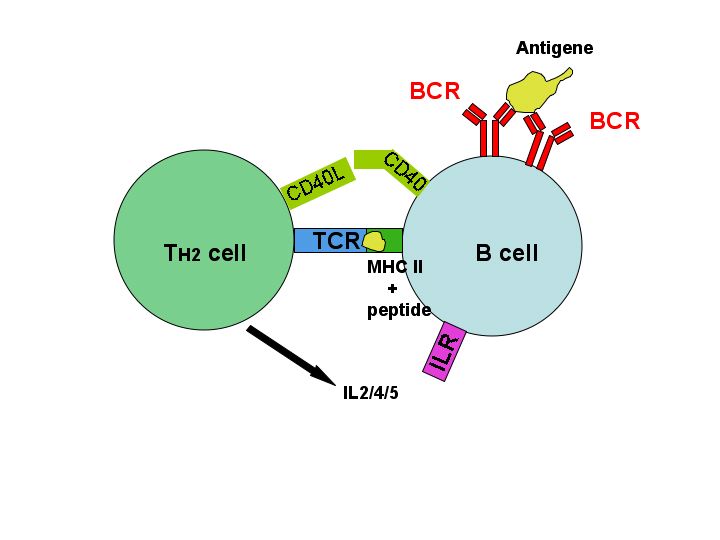
What are T Helper Cells?
T helper cells are a specialized type of lymphocyte, itself a white blood cell subtype. T cells play an important role in the human immune system, with each type serving a distinct purpose in cell-mediated immunity. T cells, so named because they mature inside the thymus organ, are the main type of cell found in lymph. T-cell receptors found on their surface distinguish them from other lymphocytes, such as B cells and natural killer cells. Helper T cells emit cytokines, spurring other cells in the body to action.
T helper cells assist other lymphocytes carry out their jobs in the immune system. They swing into action when they detect peptide antigens, signaling chemicals generated by other cells in response to outside stimuli. Once altered, they rapidly divide and secrete cytokines which regulate and assist the body’s active immune response. These cytokines also trigger B cells into becoming plasma cells and memory B cells, both integral to the immune system’s pathogen response. They also activate cytotoxic T cells and macrophages, which destroy and consume infected and cancerous cells.
The mechanism by which T helper cells accomplish their mission is CD154: a cell surface protein which binds to other proteins on antigen-presenting cells. The T helper cell’s response depends on the target cell’s type. CD154 is the molecular basis of T helper cell function, without which the body cannot develop increasingly effective antibodies to the same outside stimulus. CD154 is the key to building up immunity.
Mature T helper cells figure centrally in the body’s defense against tumor cells. Immunosurveillance, first proposed in 1970, states the immune system routinely patrols the cells of the body for cancerous activity. Upon discovery, T helper cells rally other lymphocytes, isolating and eliminating the offending cells. Recent research suggests immunosurveillance is effective up to a point; cancer has a way of escaping it that researchers call immunoediting. Tumor cells which escape immunosurveillance enter an equilibrium phase and become dormant. New tumor cell variants emerge with the ability to evade or defeat the immune system’s responses. Some tumor cells may even produce their own cytokines which inhibit and suppress immune responses.
Malfunctioning T helper cells can not only compromise the body’s immune system but also wreak havoc themselves. T helper cell hypersensitivity is believed to cause allergies, when the immune system responds to otherwise harmless substances. Hypersensitivity is also suspected as the cause of rhesus factor reactions during childbirth, chronic inflammation, lupus and similar autoimmune diseases.
No other disease highlights T helper cell’s importance like HIV. The virus primarily targets mature T helper cells and the cells they mobilize, hobbling the immune system’s ability to attack pathogens. Without treatment, an HIV patient dies either from a cancer or infection their immune system is too weak to resist.
